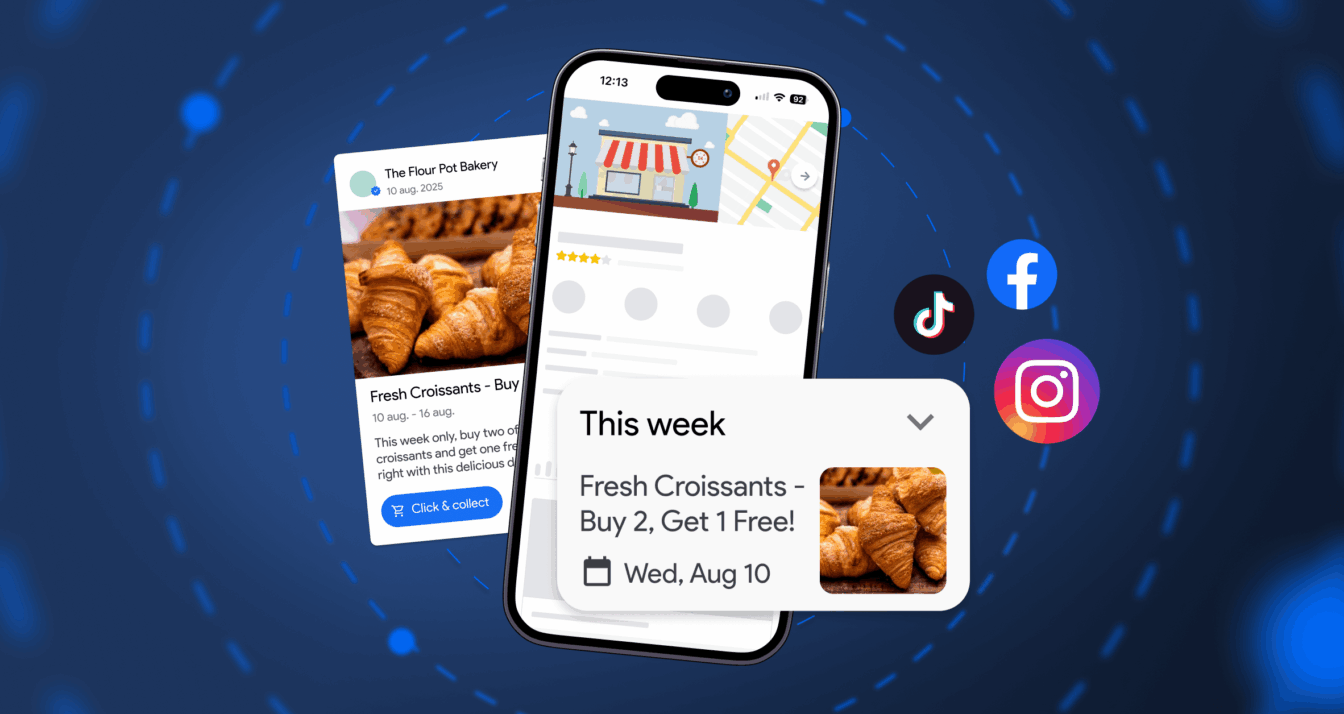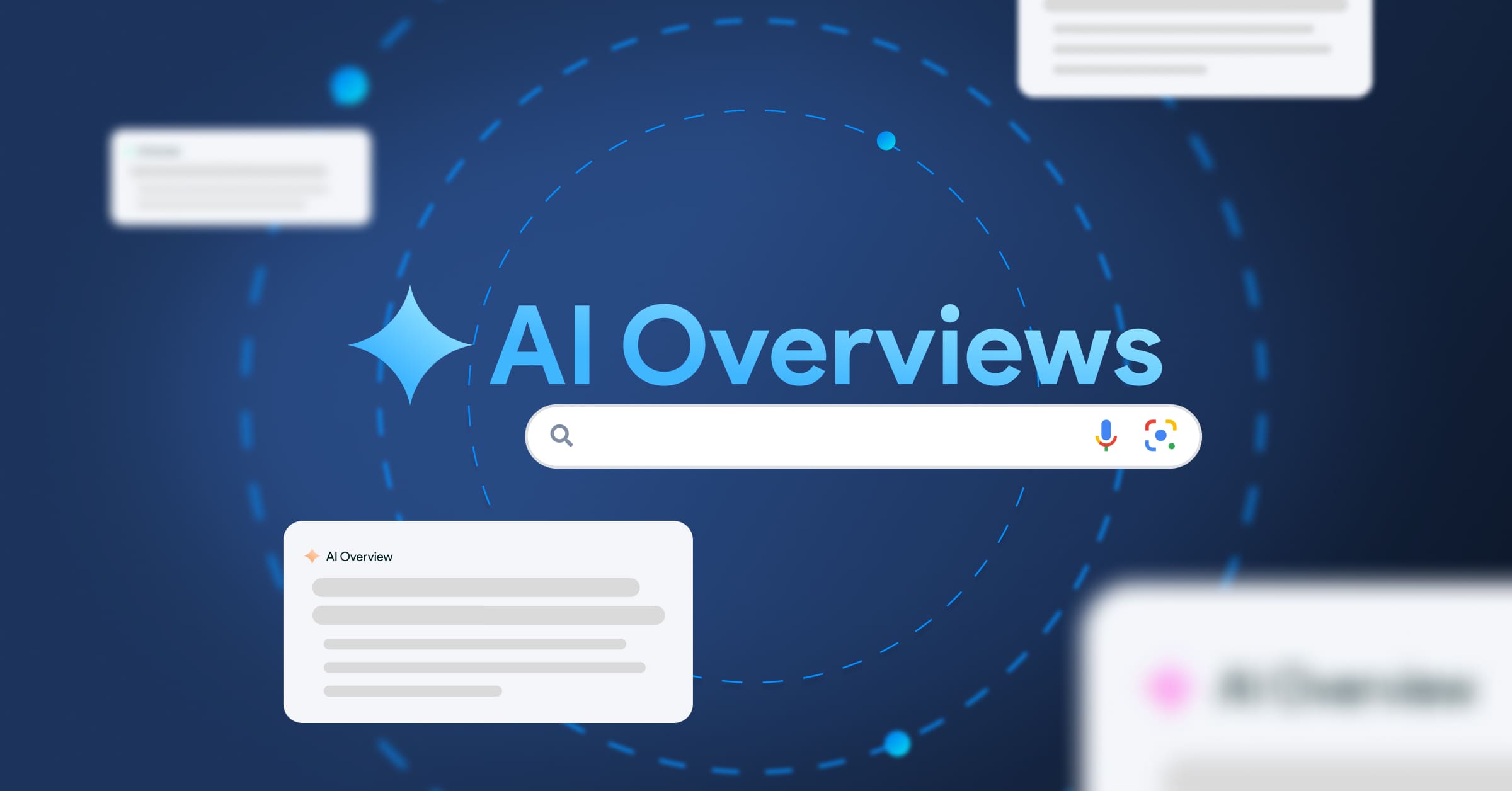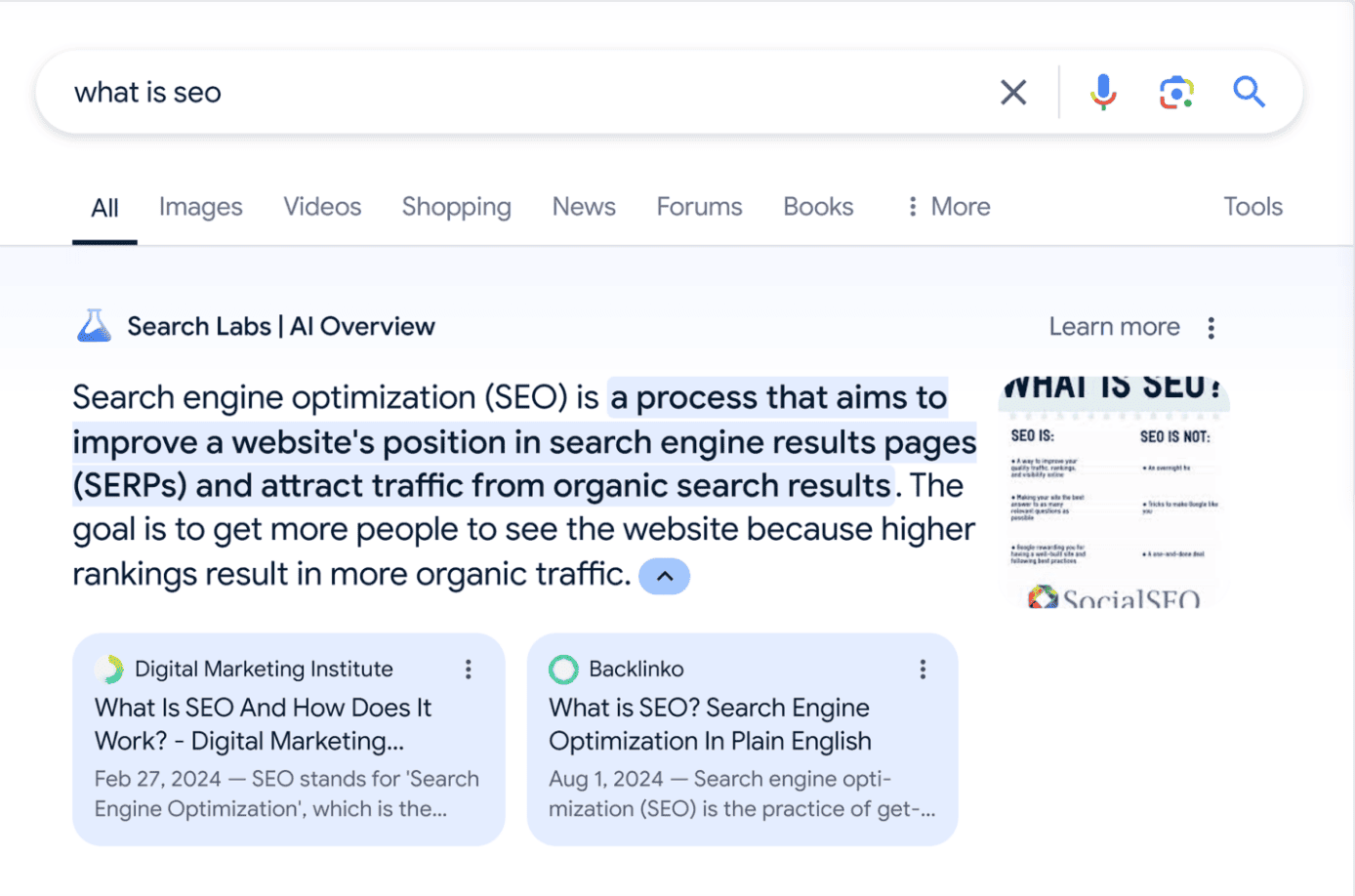
Google launches the “What’s happening” feature for Google listings
Google is rolling out a new feature called “What’s happening” on Google listings – designed…

Table of contents
A year ago, Google launched AI Overviews, a generative AI feature designed to transform the search experience. The ambition: go beyond the traditional ten blue links and provide clear, useful, and reliable answers. Since then, the vision has evolved, led by Elizabeth Reid, Google’s Vice President of Search.
So, where does Google stand one year after the launch of AI Overviews? And how is this shift towards generative AI reshaping user behaviour and the web ecosystem? Partoo breaks it down for you.
In her interview with the Financial Times, Reid’s first observation is unequivocal: “AI Overviews sparks curiosity”. Users are asking more questions, particularly longer and more precise ones.
Where users once had to think in keywords, they can now express full questions—as they would to a human. The result? Search becomes more accessible, and engagement increases.
As users ask more elaborate and specific questions, their expectations around search results are also evolving. Reid points out that AI Overviews “isn’t just about generating a clever summary”. It’s about reimagining how information is delivered—through more contextual responses, embedded links, a mix of images and text, and layered answers. It’s a real game-changer for the Search Experience.

The growing popularity of AI Overviews may be unsettling for website owners, who fear being left behind. But Reid is keen to reassure them: AI Overviews “aren’t designed to be a standalone product. They are designed to get you started and then help you dive deeper. Google provides links and references to encourage further exploration.”
That said, these AI-generated results now appear at the top of the search page, pushing traditional blue links—and Google listings—further down. Now more than ever, it’s crucial for local businesses to optimise their online presence to remain visible, not only to search engines but also to generative AI tools. Gradually, local SEO must learn to coexist with GEO—Generative Engine Optimisation—as a new area of focus for businesses.
As Google reshapes the way we ask questions and how answers are displayed, new opportunities emerge—if you’re ready to rethink your local approach!
Here are three key best practices to boost your local GEO strategy:
As Elizabeth Reid pointed out, users are now asking longer and more precise questions. Local businesses must therefore optimise their content for conversational queries, drawing on natural language.
Whereas a user might previously have typed “hairdresser Norwich”, with the arrival of AI Overviews, they’re more likely to ask something like:
“Where can I find a good hairdresser specialising in natural balayage in Norwich, open on Sundays?”
To appear in the results of such a specific query, your Google listings must be fully optimised. This means up-to-date opening hours, rich and well-written descriptions, and clear attributes.
Now that search results combine images, text, and even video, businesses that want to stay visible must diversify the formats of the content they publish online. High-quality photos on your Google listings, videos, product sections… Don’t hesitate to get creative to enhance your Google listings!
A well-built store locator can effectively meet the expectations of AI Overviews:
A well-optimised store locator can therefore become a source of answers for AI Overviews, especially for queries such as “Where can I buy X-brand trainers in Manchester?” or “Brand X click and collect Bristol”. Google may pull its responses directly from these pages.
To learn more about the challenges of store locators in the age of GEO, watch our webinar!
Download our 2025 barometer and discover which companies manage their online reputation the best, along with recommendations to enhance your business!
Want to easily develop your business through the Internet? It’s possible thanks to Partoo!
Receive our best articles and practical guides directly in your inbox every month